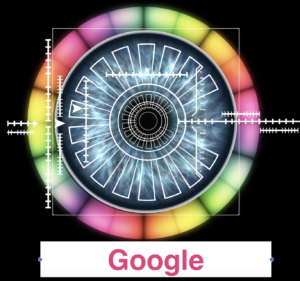
Introduction
In a recent groundbreaking announcement, Sundar Pichai, CEO of Google, unveiled a revolutionary breakthrough in the health tech industry. Google’s cutting-edge artificial intelligence (AI) technologies now have the capability to predict cardiovascular events through a quick eye scan. This development has the potential to offer an alternative to traditional diagnostic methods such as CT scans, MRIs, and X-rays. By leveraging the power of AI and analyzing retinal imagery, Google’s AI can detect signs of heart disease and provide early predictions. This article explores the paradigm shift brought about by Google’s AI in predicting heart disease and its implications for the future of healthcare.
The Power of Google’s AI in Health Tech
Google’s journey into the realm of health tech began four years ago when researchers from Google and Aravind Eye Hospital joined forces to develop an automated tool for detecting diabetic retinopathy, a leading cause of blindness worldwide. Their collaborative effort resulted in an algorithm capable of recognizing the signs of the disease and delivering a diagnosis within seconds using retinal photos. The algorithm is expected to operate independently soon, revolutionizing the landscape of eye disease detection and management.
However, the capabilities of Google’s AI did not stop at diabetic retinopathy. Earlier this year, Google unveiled an algorithm capable of using retinal imagery to identify a person’s gender, smoking status, and even predict their five-year risk of experiencing a heart attack. The AI exhibited the ability to identify problems that the human trainers couldn’t, opening up a world of possibilities for early detection of various diseases such as dementia, multiple sclerosis, Parkinson’s, Alzheimer’s, and schizophrenia.
AI Unveiled: Unlocking the Insights of Cardiovascular Health through the Eye
The eye, specifically the retina, serves as a window into the overall health of the body. The fundus, the rear interior wall of the eye, contains blood vessels that reflect crucial information about an individual’s health. By studying the appearance of these blood vessels, doctors can infer vital indicators such as blood pressure, age, and smoking habits, which are all significant predictors of cardiovascular health.
To train their cardiovascular prediction algorithm, Google and Verily’s scientists utilized machine learning to analyze a comprehensive medical dataset of nearly 300,000 patients. This dataset included both eye scans and general medical information. Neural networks were employed to identify patterns within the data, associating telltale signs in the eye scans with the metrics needed to predict cardiovascular risk, such as age and blood pressure.
When put to the test, Google’s AI was able to distinguish between the retinal images of two patients: one who experienced a cardiovascular event within the following five years and one who did not. The AI achieved a success rate of 70%, which was only slightly lower than the commonly used SCORE method that requires a blood test and has a success rate of 72%. This impressive performance demonstrates the potential of Google’s AI in predicting cardiovascular risk.
The Future of Health Diagnostics
The introduction of this revolutionary method for assessing cardiovascular risk not only simplifies and accelerates the diagnostic process for doctors but also signifies a shift toward a new AI-powered paradigm for scientific discovery. AI algorithms are now capable of analyzing existing medical data and potentially generating entirely new medical insights without human intervention, given a sufficient amount of data.
Moreover, the potential of this technology extends beyond high-tech medical facilities. In rural vision centers with limited access to specialized equipment, an affordable and portable solution involving a smartphone, a relatively inexpensive condensing lens, and a DIY retinal camera could enable vision screenings on the go. Patients would be able to capture an image of their retina, upload it to the cloud, and receive a diagnosis within moments. This technology has the potential to revolutionize healthcare and diagnostics by making them more accessible and convenient.
While the idea of an AI doctor autonomously generating novel diagnoses may still seem distant, Google’s AI research provides compelling evidence that it is not entirely out of reach. Sundar Pichai’s announcement marks the beginning of a future where traditional diagnostic methods may become supplementary to the invaluable insights we can gain from our eyes. A quick eye scan has the potential to uncover hidden health issues and predict potential cardiovascular events, ultimately transforming the way we approach healthcare and diagnostics.
Conclusion
In conclusion, Google’s AI breakthrough utilizing eye scans to predict heart disease represents a significant advancement in the health tech industry. By harnessing the power of AI and analyzing retinal imagery, Google’s AI algorithms can provide early predictions of cardiovascular events. The ability to detect cardiovascular risk factors through a quick and non-invasive eye scan has the potential to revolutionize healthcare and diagnostics. As we embrace this exciting era of health tech, it becomes evident that our eyes hold valuable insights into our overall well-being. With Google’s AI leading the way, we are stepping closer to a healthier future.
